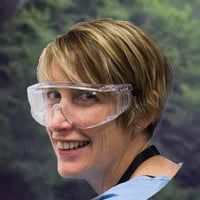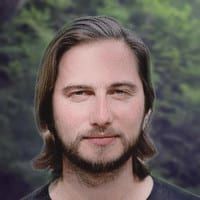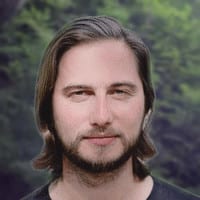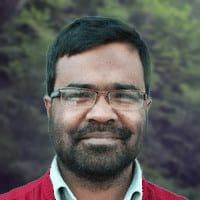Willa Huston
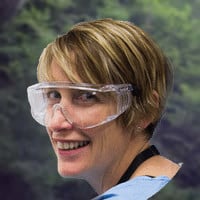
Senior lecturer, School of Life Sciences. Associate Member, ithree – Institute of Infection, Immunity and Innovation, University of Technology, Sidney
So, you think you know about Chlamydia? There is a lot of stigma surrounding Sexually Transmitted Infections (STIs), and the secrecy around the subject often prevents people from getting tested and seeking help. But how much do we actually know about Chlamydia? And how can better education, more research, and a more equal society help us to tackle the infection?
Willa Hutson, a Senior Lecturer and Research Group Leader at the University of Technology in Sydney, spoke to Traces.Dreams about her research on Chlamydia and its link to female infertility. As a researcher, Willa is preoccupied with discovering why some women become infertile while others don’t, as well as engaging with the reasons why more people in marginalised communities are affected by the infection, and the ways in which outreach work and equality can help prevent the spread.
For her, removing the stigma around STIs is a vital part of helping patients to seek and access treatment, which is why she focuses on both the scientific and social avenues that will help prevent infection. Watch the video to find out more, and join in the conversation.

Willa: Hi, I am Willa Huston. I am a Senior Lecturer and Research Group Leader at the University of Technology Sydney, in Australia.
Nerina: What is your research focus?
Willa: My research is looking at chlamydia and other infectious diseases and how they lead to infertility in women. So we’re really interested in trying to understand what happens in those women that develop infertility and what we could be better to either prevents or treat the chlamydia at that time so they don’t go on to progress to developing infertility. So we look at treatment and better diagnosis.
Nerina: What is actually chlamydia?
Willa: Chlamydia is a unique, little bacterium. So it’s a microscopic organism and we all know about microbes now, they’re everywhere around us and we hear about them being part of our body. Chlamydia is a bit more special because chlamydia actually lives inside our own cells. So it’s a bacteria but it’s like a virus in that it takes over our own cells, and the only place that the chlamydia that infects human lives is in humans.
Nerina: If I look up what Wikipedia says for example, chlamydia is a sexually transmitted infection caused by the bacterium Chlamydia and most people while infected have no symptoms. The infection can spread to the upper genital tract in women causing pelvic inflammatory disease which may result in future infertility or ectopic pregnancy.
Willa: This is our subculture facility here at UTS. This is where we grow chlamydia and it’s a fully contained room and we use human cells. Here is an incubator and I will show you some cells in flasks where we work on our chlamydia subculture experiments. In here you can see a whole lot of flasks growing chlamydia. At the moment the lab is pretty busy working on some new molecules that might be good new antibiotics against chlamydia and we’re working on some new models of human disease including some patient samples that we’re working on from women with different symptoms of the disease. So it’s an exciting time here in Australia for chlamydia research.
Nerina: Not everyone who is infected react in the same way and gets complications. Why?
Willa: It’s really interesting. So it’s transmitted sexually throughout the population. So lots of people know about it as a sexually transmitted infection and in fact our research is trying to understand how it is that in some women there’s very severe pathology that leads to infertility develops and so we look at those women. We look at the organism in lab models and we think that what happens is a combination of what’s happening in the woman’s body at the time she gets the infection and what are the stages of her cycle and the other organisms there. All of that comes together so that in some unlucky women they go on to develop infertility but that’s about as much as we know at the moment.
Unfortunately, we need to know a lot more. But one of the things we’re trying to do is understand the form of the organism during that infertility development and try to develop better drug treatments to treat that form. And so that’s a high priority for us; it’s treatment early to prevent the infertility developing.
Nerina: How many women are affected by infertility?
Willa: That it’s very hard to pin a number on it. Some studies say as high as 20%. I don’t think it’s that high but it’s certainly the more infections there is severe increase in risk. I think the risk is about every about 1 to 5% of infections will develop infertility at least in one tube. But given that… So for example in Australia there is about 80,000 infections, slightly over half of those are in women and if you think even if it’s only 1% annually that still a significant numbers each year of women who will have tubal infertility that they will not know about.
Nerina: How about men?
Willa: There’s lots of evidence that they also get infertility or at least reduced fertility from the infections, no doubt. We think similar scarring occurs up in the fine tubes in the male reproductive tract and they are pretty good transmitters. So they are often asymptomatic, they’re less likely to seek treatment and testing and they’re very good at transmitting the infection because they often have a good infectious burden. So then because of the nature of sex I guess they’re good transmitters. So they have a big role to play A, they can be compromised in their own infertility but B as key people in the networks that we need to kind of get in for testing and treatment who are not as engaged in the healthcare it’s very important that we look at men.
Nerina: What do we know about chlamydia and what do we not know about it?
Willa: So we know that it’s an ancient organism. There is evidence of trachoma the eye infecting version in hieroglyphics, so from ancient Egypt but we even know from genome sequencing analysis that it’s a very ancient organism. So it’s been around as long as we have. So we know therefore that it’s a very clever at living inside us. It’s almost evolved with us in some ways, and so we do know that is really clever and that it’s a really well adapted to live inside our cells.
What we don’t know is why that goes wrong in some women. So logically if you only live in humans you don’t want to stop them having sex and transmitting on the organism and so one hypothesis is that it actually is advantageous for some proportion of women to be infertile or lower fertility with chlamydia because then than they might have more sex in an evolutionary history and the organism could be transmitted. As long as it’s not causing very many symptoms which often it doesn’t cause many symptoms then the women are not prevented from having sexual contacts but they’re prevented from having babies. So they are more likely to have more sex.
So maybe it’s just evolved this feature to increase its spread in the population, but we actually don’t know if that’s what’s happening or it’s something about the women themselves, their particular type of immune response, perhaps their genetic makeup. Maybe those of the factors that they’ve got the unlucky lottery that when they get the chlamydia infection, they’re the ones that are going to develop the infertility. So that’s one of the unknowns that is a big priority. Is that kind of personalized or precision medicine and chlamydia is it really about that.
Nerina: Are there differences between countries in their infection rates?
Willa: Absolutely, it’s a very high burden in the Pacific Rim. So very poor countries like Samoa have very high burden of chlamydia, mostly because there’s very little health intervention and very little treatment and testing. In most developed or well-to-do countries like in Europe or Australia or the US the baseline prevalence, so the average number people who might have it in reproductively aged individuals is about 4 to 6%. But even in those countries marginalized people or people who have low socioeconomic conditions have a much high percent. So it’s a disease of marginalized populations.
For example, in Australia you may be aware that we have the first people, indigenous people of Australia. They are very marginalized and they very socioeconomically disadvantaged, and in young people – young indigenous people chlamydia can be as high as 24%. So that’s really, really high and so we really worry about the burden of infertility and other sequelae from chlamydia like ectopic pregnancy in those young indigenous people.
It’s worth mentioning that the other form of chlamydia that infects our eyes and can lead to blindness. There’s about 5 million people worldwide who are blind from Chlamydia trachoma and a gain to our national shame. The indigenous people of Australia are one of the few peoples in a developed country where we still have trachoma.
Nerina: How are the chlamydia infections of the eyes and of the genitals related?
Willa: They are very related. So they’re quite similar, there are just a few subtle differences between the eye and the genital infecting chlamydia. In Australia in fact, it may be that those eye infecting strains may have come from genital strains that came in with Caucasian people, when Caucasian people came to the Australia continent just over 200 years ago.
Nerina: And chlamydia does not affect only humans but also animals with severe consequences, right?
Willa: This is a really… it’s an important topic for animals worldwide but it’s a very dear topic to Australians because our national icon, the koala is suffering severely from chlamydia. The chlamydia that infects the koala is called Chlamydia pecorum, it’s a different species from the chlamydia that infects humans but the disease presents almost identically. So they get ocular infections all around the eye that can lead to blindness, very severe blindness. They get your urinal genital infections in their urinary and genital tracts, which can lead to incontinence, which we call wet bottom and it’s really debilitating. They’re in a lot of pain, their whole bottom rump is covered in sort of wee basically that isn’t evacuating properly and that’s from scarring. That also scars all through their reproductive tract.
That scarring in their eyes and in their reproductive tract looks exactly like what happens in humans. So it’s a different chlamydia but present in the animals in the same way and it’s a really sad story. In the koala it’s very hard to treat because we can’t give them oral antibiotics very often for koalas. Most the time we can’t because they have a special complex gut composition that they really need because they eat gum leaves.
So part of our research is actually translated from a human into the koala because we need to find new ways to treat chlamydia in the koala. At the moment it’s one of the major threats to the koala. Habitat loss is the major threat undoubtedly and that’s a real problem, but as soon as we do more habitat loss and the koala populations get more stressed the disease increases. So it’s a disease like our marginalized people, chlamydia in the koalas is associated with stresses and then we already put them under stress from removing more trees or whatever we do and then the chlamydia presents and then they lose fertility. So the koalas are a threatened species right now so it’s not on the extinction list but it is severely threatened and vulnerable in some states and threatened in others. So yeah.
Nerina: But chlamydia in men and women is treatable, correct?
Willa: So in humans we can treat chlamydia and it’s very simple. It’s a simple antibiotic regimen and it’s mostly effective if the people would stick to the antibiotics and take them. The problem is that because it’s often a quiet infection, so it’s often asymptomatic people might not seek treatment and so the problem is that they often don’t get this treatment and then the symptoms develop or the infertility develops, sometimes without them being aware.
So treatment is easy, testing is easy. We can do a PCR from a urine sample or swab. But it’s getting the right people into the clinic and getting them tested and treated in time is the problem.
Nerina: What new information have you learned during your research?
Willa: I knew very little when I started just over about 10 to 12 years ago now. I thought chlamydia was fascinating in a very abstract way and I’ve always loved microbes but chlamydia was kind of interesting. Now I guess I’ve learnt that even though it’s on face value a very simple microbe compared to most of the other microbes it’s an amazingly versatile and niche adapted organism that we really only just beginning to understand.
I think that it’s much more versatile and adaptive than we thought and I think that we are also starting to understand that perhaps it lives in more spots than just the urogenital tract. Perhaps it lives in the gastrointestinal tract. Perhaps it survives longer than we think after treatment. There’s a lot of things that we used to think were simple but they’re not and I think that’s the most exciting thing. Life is always more complex than we think it is.
Nerina: What do you think we need the most: better prevention, treatment or information?
Willa: I love the list that you outlined. So the challenges for the chlamydia field are almost all three of those. Prevention is critical. Most STIs are best controlled with prevention and the best prevention would be a vaccine. Chlamydia is very hard to make a vaccine against but I have no doubt that will happen eventually. Treatment is absolutely a critical aspect of chlamydia control and I think we could do that better, and that’s part of our research is improving the options for treatment. But information really matters. There’s a real stigma around STIs. In lots of populations there’s a real stigma around infertility that might be because you had an STI years ago.
So I think changing our culture around acceptability of sexually transmitted infection but just sexual behavior in general and just more acceptability, more ease of communication. So that it is not so much of a stigma for those women who are infertile and worried that maybe that’s why and they can’t even talk about that, talk about it. So I think all three yeah: prevention, treatment but also change that stigma and open the conversation. Maybe more people will get tested and treated as well.
Nerina: How difficult is it to speak about STI, sexually-transmitted infections?
Willa: There’s been lots of work in many countries around for women, for example, when they come in for the cervical screening to try and get a routine sexual health workup without a stigma. Just you’re already here let’s do that but that’s often in every two years and now that will decrease with the change in cervical screening to PCR.
There’ve been lots of conversations around try to target risk groups to have a broader conversation around healthy sexual behavior and acceptability. But most GPs find it really challenging to have that conversation or they’re just too busy. So there’s lots of activities around the clinic nurse perhaps around targeted screening and outreach in jails, high schools, nightclubs to try and reach the most vulnerable people and screen them more regularly so lots of go to them.
There was a study done by researchers in Australia about postal pee and post. Where they used a special material to dry the pee so they could post it and do a PCR test and then post them the antibiotics later. So there are lots of, lots of research being done in acceptability of seeking, testing and treatment, but I think we’ve got a long way to go.
Having said that, when we talked to our university students about our research and we ran a free sexual health clinic with the doctors, not with our researchers in the campus. The doctors say that lots of young people on university campuses will openly say I’m here for my sexual health checkup. So maybe we’re getting there with some populations.
Nerina: Why did you decide to research this topic? Is it personal?
Willa: I’m really passionate about women’s health. I think that women’s health and particularly the kind of you know that the “vagina” and the reproductive tract are neglected. I think we need to pay them some more attention. You know I think people feel uncomfortable about honest conversations about sex and about reproductive health particularly for women and therefore we do not know as much and I think we need to change that and we need to change the conversations and our comfort levels around talking about our vaginas, our cervix and our own health. It’s deeply important to us at some point to many of us, not to all of us but at some point many of us will deeply care that we would get to reproduce or that we get to be involved in parenthood and so fertility it’s a really personal issue.
It really matters to me that that our research can actually make a difference to individuals that something is so fundamental to many people that is really confronting when they find out they’re not, they’re infertile or they need fertility treatment. We spend a lot of our lives trying to control the pregnancy and plan for pregnancy and prevent pregnancy until we’re ready and then it’s really shocking to some women to find out that they’re not fertile or they’re going to need treatment to achieve their pregnancies and so it is personal.
Yeah, it’s personal. It’s something I am passionate about and I think as a mom and I also I had fertility treatment for my children. My cause of infertility is still not really clear and just as a woman I think that all of those things matter. For me research is something that I really need to care about, I do care about a lot and that’s why I do it.
Nerina: How important is it in your opinion, to have a conversation about women’s bodies?
Willa: I think it’s critically important that we start having open and frank conversations with men and women that we bleed every month, we have pain every month. Some women have very serious pain every month. We go through a normal biological process where our body changes throughout that month and that’s all normal and we quietly hide it. Why? You know it should be celebrated. Can you imagine if men had periods they would be driven through tampon vending machines, they would be at the bar. You could order your gin and tonic and your tampons.
So you know I just think it’s a symptom of patriarchal society that all of a sudden menstrual blood is icky and that we don’t talk about periods and we don’t admit that we are having a bad day because we’ve got period pain but it’s quite fine to say that we’re having a bad day because we have a headache. You know I think it’s really important and I think by keeping it sort of a secret thing that we can’t talk we’re giving some kind of message to our young women that that’s kind of wrong, but it’s not wrong, it’s biology, half the population goes through it. So for me it’s really yeah… I can go on about it for ages. I think it’s really important that we change the conversation and we’re enabling a better attitude to our health, but I think we’re also enabling a better attitude to women as functional, important members of society we just have a different biology.
Nerina: Equality between men and women should not mean that women should become like men, right?
Willa: Absolutely. If we think as a society we can achieve equality by “fixing” the women and making them more like men and fitting in the patriarchal constructs that we’ve made we’re not going to benefit from that. The women will be less happy than they already are and we’re not actually gaining the biological and the wonderful differences that we give and won’t be gained because they’ll be trying to hide them in pretending to be like men. So now I completely agree that yeah I think we just need to really push some pretty uncomfortable and hard barriers around women are different and it’s a really great and you know period blood it’s everywhere, we all have periods, it’s fine. It’s actually fine look at us we’re here. It’s not the scary thing that you think it might be.
Nerina: You’re interested also in equality in your team. Could you tell me more about this?
Willa: Absolutely. So in my work I’m very conscious of those – the gender differences. Equity and diversity in my sector has a long way to go, diversity as well as equity. So the classic white male or even the classic stereotypically math or computation science may be even an Asian male is viewed as being smarter or whatever it is. There are always horrible stereotypes.
So in our team we talk a lot about that, we talk a lot about the fact that our cohorts of participants need to include diverse participants, indigenous participants, people who identify in the LGBTIQ spectrum there needs need to be represented and in our team we’re always open about people who come who have different identities. Whether that’s with respect to their identity or they heritage – ethnic heritage and we’re lucky in fact, that we have a very diverse team of researchers and all those voices in the room creates an amazing, challenging atmosphere, but also it brings so much. It brings us all so much further forward.
We also have a lot of activities in my faculty around championing that diversity and so in my other role within my faculty I am chair of our Equity and Diversity Committee. So we’re constantly calling out for new behaviors and new activities and new ways to change our culture in our sector to support a broader inclusivity within a sector of these different groups and women, but not just women and not just white women it has to be in intersectional approach.
Nerina: You’re really passionate about outreach. Why does outreach matter?
Willa: So I think outreach is a way of giving back to the community. I’m in a position of privilege, I have a permanent university job, I get to do research, and I get to teach undergraduates and postgraduates. I outreach by going into high schools, I outreach by social media and communication. I contribute wherever I can to Internet forums or you know profiles on Internet things like these because I feel if… A, I think the broad exposure of research matters. The community needs to know what research dollars are being spent on in a way that they can understand it so that they see the value of research.
So that’s one reason for doing it, but one of my really main reasons for doing it is if you can’t see role models ahead of you doing things that you think are interesting then how do you know to go into that field. So I think for young women and girls going through high school if all they see in the media which largely they do is men with beards in lab coats then science doesn’t seem like they belong. And so if what if when not out there, pushing ourselves out there how do they know that they belong in science? And so for me that’s why outreach matters.
Nerina: Where do you see your research in 10 years?
Willa: I think I see my research becoming much more holistic and much more engaged with women and looking really at chlamydia and other infectious agents still in the reproductive space but really whole approach it and the whole package. Social factors, their immune response, their body, maybe their genetics and how all of those come into play in some women to have the consequences of infertility and how we can work with the whole woman better earlier to understand her risks and work with her to help prevent her risks of becoming infertile later or knowing that she’s at quite a risk and she can consider how to protect herself.
Nerina: Is there one thing that people should know more about chlamydia?
Willa: I guess the one thing which is that I want people to know is that it’s not their fault, even if they’re positive it’s not their fault. It’s okay, come back for more testing and treating. Don’t hideaway if you think you’re at risk. It’s not your fault. It’s okay to have an STI it’s just better if we can treat you more quickly and prevent it from spreading further but also maybe prevent the disease from getting worse for you.
Nerina: Is there a key message that you would like to tell your children?
Willa: Don’t forget who you are. There’s so much in society that tells you who you should be. Who you are and what your core values are just hang onto that and stick to those and do what you want to do that you feel is the best and the right thing for everyone around you but take who you are into that.
Nerina: Thank you so much Willa for this conversation.
Willa: Not a problem. Thank you. I hope that helped.
Nerina: And thank you for watching. See you next time, bye ciao.
Senior lecturer, School of Life Sciences. Associate Member, ithree – Institute of Infection, Immunity and Innovation, University of Technology, Sidney
